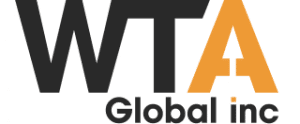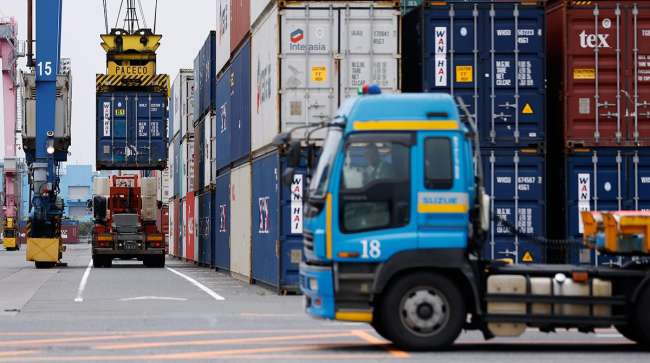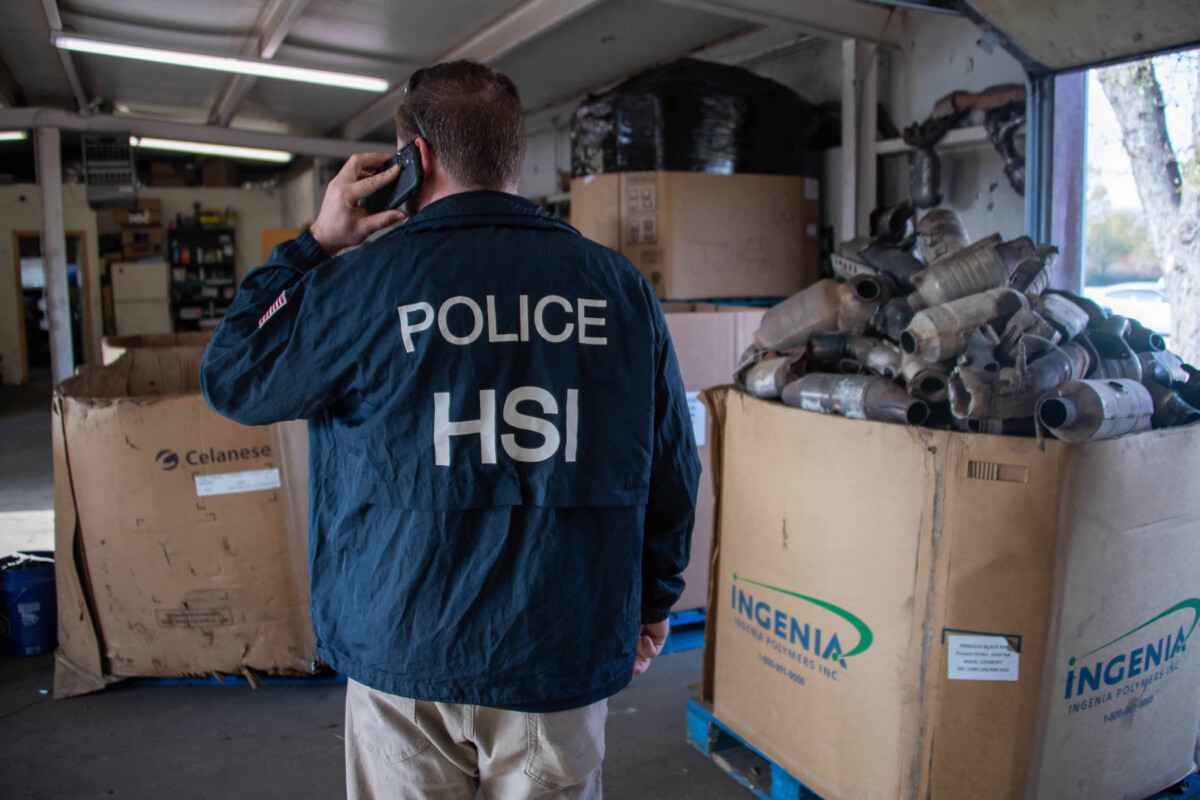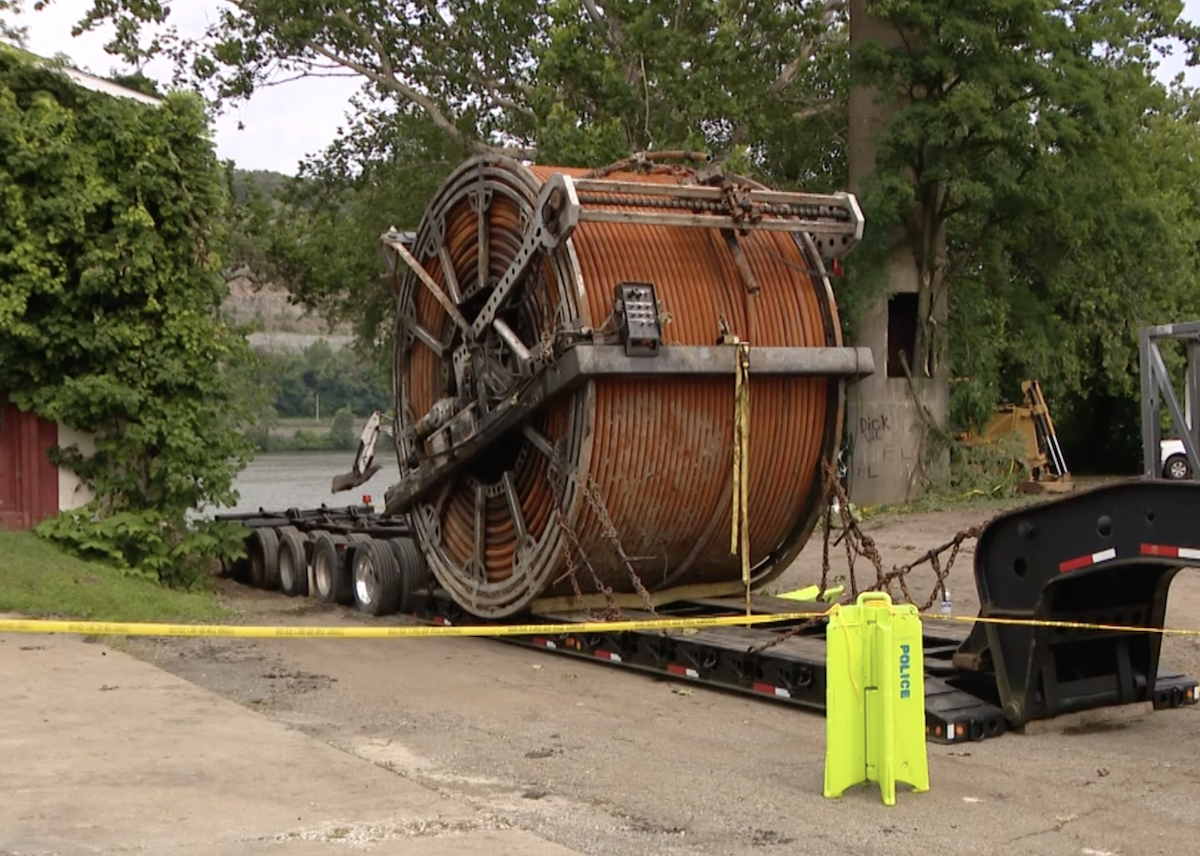A transfer crane unloads a container onto a truck in a shipping terminal at the Honmoku pier in Yokohama, Japan. (Kiyoshi Ota/Bloomberg)
President Donald Trump announced tariffs of 25% on goods from Japan and South Korea beginning on Aug. 1, as he moved to impose unilateral rates on countries that have not yet secured trade deals with his administration.
The two Asian nations were the first announcements in what the president promised would be a flurry of demand letters issues and trade deals announced on July 7. Trump’s second-term rush to overhaul U.S. trade policies has served as a steady source of uncertainty for markets, central bankers and executives trying to game out the effect on production, inventories, hiring, inflation and consumer demand — routine planning that’s hard enough without costs like tariffs that are on one day, off the next.
In the end, Japan and South Korea’s rates, shared on his Truth Social platform, are largely in line with what he had already announced the two nations were likely to face. After a 90-day reprieve from his so-called reciprocal tariffs, which initially hit Japan with a 24% rate and South Korea with a 25% levy, Trump lowered those duties to 10% to allow time for negotiations.
Trump warned the nations against retaliation in his letters, saying any actions would be met with a response from the U.S.
“If for any reason you decide to raise your Tariffs, then, whatever the number you choose to raise them by will be added onto the 25% that we charge,” Trump said.






